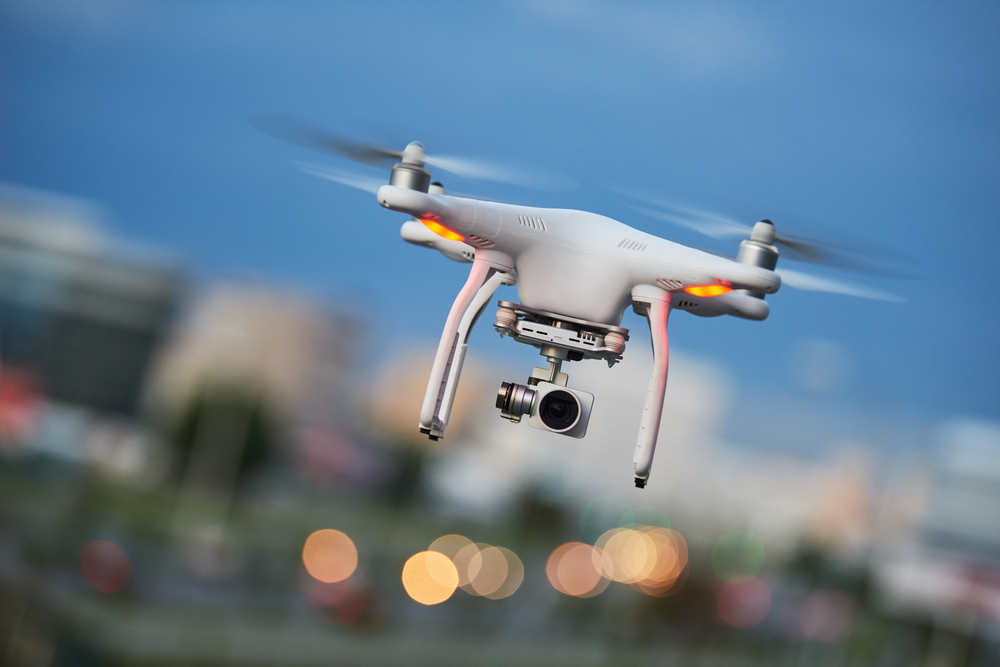Police Scotland deploys drone fleet to find missing people
The emergency services outfit is the latest to adopt the unmanned aerial technology to help with rescue missions


Police Scotland has launched a new neural network-driven drone programme to help find people who have gone missing.
The technology onboard the fleet of drones, such as advanced cameras and AI-powered software, will allow pilots to determine whether something that appears on a screen is, in fact, a person.
When a camera is situated at great heights, it becomes difficult for the human eye to discern a 'speck' on the image from a silhouette of a missing person.
The advanced imagery technology - which is the result of a collaboration between Police Scotland, Thales and the University of the West of Scotland - can help identify missing people from up to 150 metres away. The software it uses to differentiate meaningless 'specks' from animals, vehicles or real people is light enough to be run on a smartphone and uses machine learning to continually increase its accuracy.
"The drone itself has very special sensors on it," said Insp Nicholas Whyte, of Police Scotland's air support unit to the BBC.
"There's a very highly-powered optical camera which can allow us to see things quite clearly from a good height. Also, there's a thermal imaging sensor which detects heat.
"We're there to find people. People who need our help or people who are lost."
Get the ITPro daily newsletter
Sign up today and you will receive a free copy of our Future Focus 2025 report - the leading guidance on AI, cybersecurity and other IT challenges as per 700+ senior executives
Growing adoption
The technology being deployed by Police Scotland is the latest in a line of deployments from emergency services across Britain in recent months.
The UK's Maritime and Coastguard Agency (MCA) announced in August that it was seeking applicants for its 990,000 drone contract to help search for missing persons up to 10km away from shore.
The technology would allow emergency responders to safely and remotely explore regions that would be difficult to investigate due to poor conditions such as low light, wind or fog.
The UK government also awarded funding to a variety of startups looking to use drone technology for more than cool cinematic shots and airport disruptions.
Among the successful applicants was Loughborough University which has developed technology to detect chemical hazards. Others were developing technology to detect gas leaks and assist decontamination missions.
Ordnance Survey also said earlier this year that it would start using solar-powered drone technology to collect better images of Earth than was previously possible.
The 145kg drone named Astigan will be able to fly for 90 days at 67,000 feet without stopping and will capture images which conventional aerial image technology would struggle to do.

Connor Jones has been at the forefront of global cyber security news coverage for the past few years, breaking developments on major stories such as LockBit’s ransomware attack on Royal Mail International, and many others. He has also made sporadic appearances on the ITPro Podcast discussing topics from home desk setups all the way to hacking systems using prosthetic limbs. He has a master’s degree in Magazine Journalism from the University of Sheffield, and has previously written for the likes of Red Bull Esports and UNILAD tech during his career that started in 2015.
-
 Intel targets AI hardware dominance by 2025
Intel targets AI hardware dominance by 2025News The chip giant's diverse range of CPUs, GPUs, and AI accelerators complement its commitment to an open AI ecosystem
By Rory Bathgate
-
 Calls for AI models to be stored on Bitcoin gain traction
Calls for AI models to be stored on Bitcoin gain tractionNews AI model leakers are making moves to keep Meta's powerful large language model free, forever
By Rory Bathgate
-
 Why is big tech racing to partner with Nvidia for AI?
Why is big tech racing to partner with Nvidia for AI?Analysis The firm has cemented a place for itself in the AI economy with a wide range of partner announcements including Adobe and AWS
By Rory Bathgate
-
 Baidu unveils 'Ernie' AI, but can it compete with Western AI rivals?
Baidu unveils 'Ernie' AI, but can it compete with Western AI rivals?News Technical shortcomings failed to persuade investors, but the company's local dominance could carry it through the AI race
By Rory Bathgate
-
 OpenAI announces multimodal GPT-4 promising “human-level performance”
OpenAI announces multimodal GPT-4 promising “human-level performance”News GPT-4 can process 24 languages better than competing LLMs can English, including GPT-3.5
By Rory Bathgate
-
 ChatGPT vs chatbots: What’s the difference?
ChatGPT vs chatbots: What’s the difference?In-depth With ChatGPT making waves, businesses might question whether the technology is more sophisticated than existing chatbots and what difference it'll make to customer experience
By John Loeppky
-
 Bing exceeds 100m daily users in AI-driven surge
Bing exceeds 100m daily users in AI-driven surgeNews A third of daily users are new to the past month, with Bing Chat interactions driving large chunks of traffic for Microsoft's long-overlooked search engine
By Rory Bathgate
-
 OpenAI launches ChatGPT API for businesses at competitive price
OpenAI launches ChatGPT API for businesses at competitive priceNews Developers can now implement the popular AI model within their apps using a few lines of code
By Rory Bathgate

